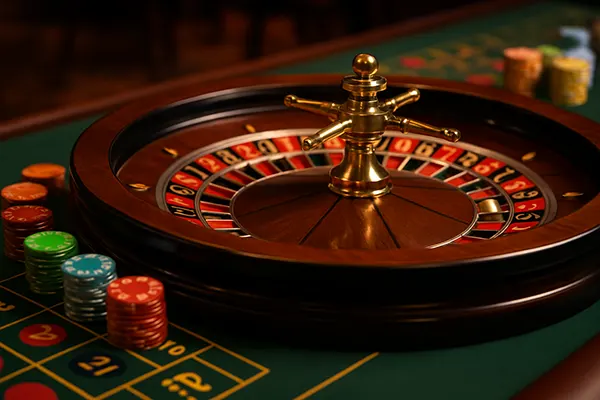
Top 10 Roulette Strategies Tested: Practical Insights (June 2025)
Roulette remains one of the most mathematically captivating and accessible casino games. While its mechanics are simple, many players aim to outwit the odds through strategic play. In this article, we thoroughly examine ten of the most discussed roulette strategies, placing each to the test with practical insights and objective analysis as of June 2025.
The Most Recognised Systems: Classic Approaches to Roulette
The Martingale strategy is perhaps the most well-known method in roulette. Based on doubling your bet after every loss, it seeks to recover previous losses and generate a small profit. Although appealing in theory, Martingale requires a large bankroll and unlimited table limits—conditions rarely available in real-world scenarios.
Similarly, the Fibonacci sequence approach follows a more conservative progression. After a loss, players move forward in the sequence, and after a win, they step back two numbers. While less aggressive than Martingale, the Fibonacci system still encounters the same risks when facing long losing streaks.
The D’Alembert system, named after the French mathematician, operates by increasing bets by one unit after a loss and decreasing them after a win. It offers a less volatile alternative, yet it, too, cannot circumvent the house edge embedded in the roulette wheel.
Limitations of Traditional Strategies
While these strategies appear logically sound, they share a common vulnerability: dependence on progressive betting. If a losing streak extends beyond what the bankroll can withstand or if the table’s maximum bet is reached, the system collapses.
Additionally, none of these methods influence the game’s actual probability. Every spin is an independent event, and no prior results change the odds. Thus, even the most carefully applied sequence can fail purely due to chance.
Lastly, players must also consider emotional discipline. Strategies like Martingale can lead to frustration and risky financial behaviour if losses escalate quickly. Therefore, psychological resilience is just as vital as numerical understanding when using such systems.
Non-Progressive and Sector-Based Systems
The James Bond strategy is a flat betting approach that divides each round’s stake across multiple bets: high numbers (19–36), a six-line (13–18), and zero as insurance. This method offers frequent wins, but a single unfavourable spin can wipe out multiple rounds of profits.
Another notable tactic is the Sector Betting approach, often used in French roulette. It’s based on wheel sectors like Voisins du Zéro or Orphelins and requires memorising specific patterns. This method appeals to players seeking a more structured and thematic betting routine.
The Column Betting system involves staking chips on the three column areas of the layout, aiming to catch higher payouts over time. Although the payouts are larger (2:1), consistency remains elusive due to random distribution of winning numbers.
Strategic Variety and Realistic Expectations
What makes these strategies attractive is the illusion of control and structure in a random game. However, the success of these methods depends on variance. Unlike progressive systems, flat betting can prolong bankroll life but does not guarantee profit.
Moreover, sector betting requires detailed knowledge of wheel layout and number distribution. This makes it less appealing to casual players who prefer simplicity over complexity.
Ultimately, none of these methods remove the house edge, but they may improve entertainment value and structure one’s play session more meaningfully when used responsibly.

Modern Mathematical Models and AI-Assisted Techniques
In recent years, some players have explored data-driven betting models and even used AI tools to detect patterns. While roulette remains random, models built using historical data try to find streaks or biases, especially in physical wheels used at land-based venues.
One such method is the Bias Wheel Strategy, which analyses repeated physical imperfections in a roulette wheel over thousands of spins. Although effective in rare cases, most modern casinos have countermeasures to eliminate physical bias.
AI-assisted simulations, meanwhile, can be used for educational purposes. These tools help test strategies in virtual settings with customisable bankrolls, bet sizing, and loss limits, allowing players to understand risk-reward scenarios more deeply.
Testing and Verifying with Simulations
Simulated environments allow players to assess how strategies perform over thousands of rounds. This is particularly useful in identifying drawdown risks and win frequency. By running side-by-side comparisons, players can gain realistic expectations before committing funds.
Moreover, such tools can aid in developing bankroll management skills. Knowing when to stop or adjust stakes after prolonged losses becomes clearer with statistical evidence instead of emotional guesses.
Nevertheless, the golden rule remains: no AI or strategy can beat true randomness. While technology may assist in preparation, it cannot manipulate roulette outcomes at regulated online or offline tables.
Most popular
-
 How to Play Cutie Cat: A Slot with Adorable Animals — Pros, Cons, a...
How to Play Cutie Cat: A Slot with Adorable Animals — Pros, Cons, a...The Cutie Cat slot is a light-hearted, visually charming game that has quickly gained popularity among players …
-
 Cashing In with Piggy Bankers: A Comprehensive Slot Game Review
Cashing In with Piggy Bankers: A Comprehensive Slot Game ReviewSlot gaming has evolved tremendously over the years, and the Piggy Bankers slot game stands as a …
-
 Forging Wilds Slot Game Review
Forging Wilds Slot Game ReviewForging Wilds is a visually captivating and engaging slot game that brings players into a world of …
